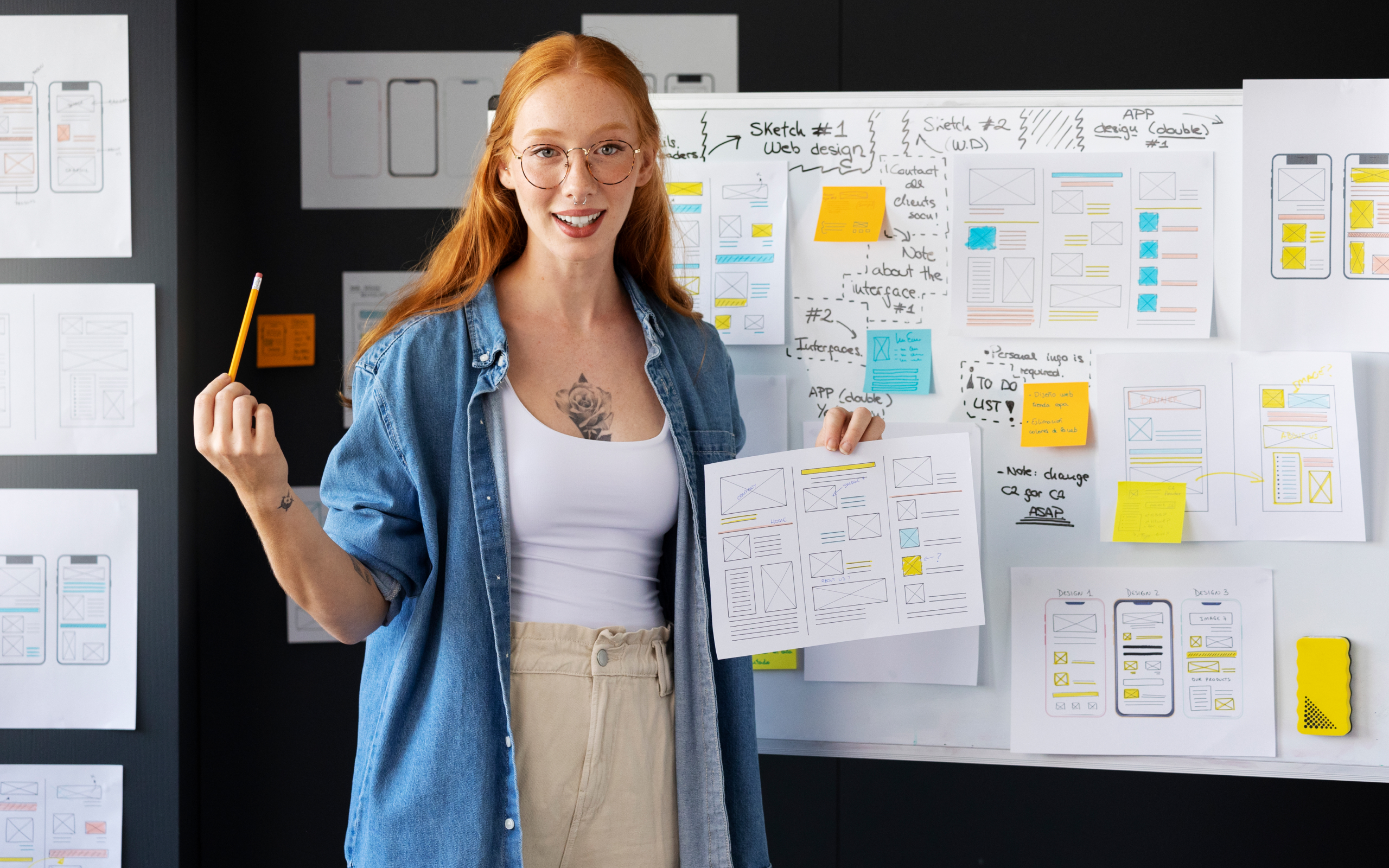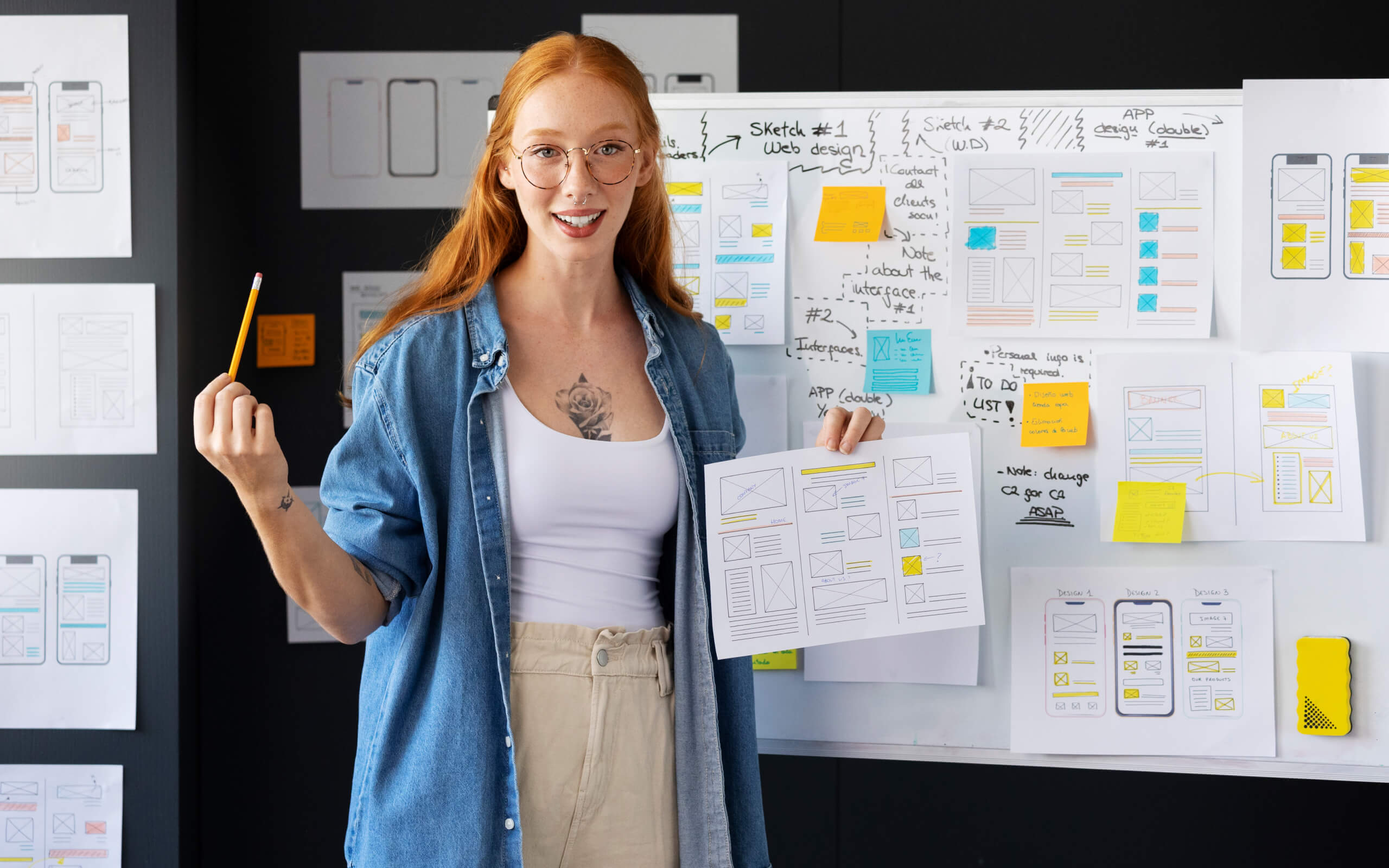Foreword
We have to admit - first impressions are everything. And while in life it may not be the best principle to base your relationships on, in business you can’t escape the fact that your clients judge you from the very second they go to your website, open the app, etc.
That’s why your software shouldn't just be functional - it should also be convenient, attractive, and user-friendly. Fortunately, there’s a whole subset of software development that aims to do exactly that and it’s called UX/UI design.
We have a lot of experience with UX/UI in custom software development and want to share it! In this article, we will talk about how we approach UX/UI design in SENLA, and how we handle the common UX/UI challenges our Clients come across.
On the spot
User Experience (UX) denotes the satisfaction users feel when using software, while User Interface (UI) is the visual aspect they interact with, including elements like buttons, colors, and layout.
UX and UI, while distinct in their focus, are frequently paired due to:
Interdependence: UX's emphasis on user interaction and UI's on visuals must align for optimal results.
Unified Goal: Both aim for a seamless user experience—UX through intuitive navigation and UI with engaging visuals.
Design Flow: UX design typically precedes UI, leading to their connected discussions in project timelines.
Skills & Tools Overlap: Design tools cater to both UX and UI, and designers often possess competencies in both realms.
Evolving Definitions: As design fields evolve, the distinction between roles like web and interaction designers blurs, grouping UX and UI more closely in contemporary design discussions.
Our approach to UX/UI in custom software development when working with Clients consists of 7 steps:
Step 1: Kick-off meeting
Step 2: Research and analysis
Step 3: Designing the PoC, architecture, and wireframing
Step 4: Designing the product
Step 5: Testing
Step 6: Deployment and shipment
Step 7: Validation and post-deployment support
Read on to learn how exactly we do UX/UI research and design when working on custom software development.
UX vs. UI Design: What’s the Difference?
First, let’s get our definition straight: what is UX, what is UI, why are they different and why are they often grouped?
UX, or User Experience, refers to the overall experience and satisfaction a user has when interacting with software or application.
It encompasses the design, usability, functionality, and overall flow that determine how intuitive and efficient the software is for the end-user.
By outsourcing UX design, you can leverage the expertise of seasoned professionals who specialize in creating effective wireframes, ensuring your software not only functions smoothly but also resonates with your target audience's preferences and requirements.
UI, or User Interface, is the visual and interactive component of software that users interact with. It includes everything from buttons, menus, and icons to colors, typography, and layout. In essence, UI is how the software looks and feels to the user.
Ultimately, UI works hand-in-hand with UX to create a seamless and engaging user journey. Poor UI can hinder the overall user experience.
UX and UI are often grouped for several reasons, even though they address different facets of design:
- Interdependence: While UX focuses on the overall feel and flow of the user's interaction with a product, and UI focuses on the product's appearance and layout, both need to work harmoniously. A well-thought-out UX design can be undermined by a poor UI, and vice versa.
- Shared Goal: Both UX and UI aim to provide a positive experience for the user. UX designers ensure that the user can easily navigate and achieve their goals, while UI designers ensure that this process is aesthetically pleasing.
- Sequential Process: In the design process, UX often comes before UI. Once the functionality and flow are defined, the visual and interactive elements are designed. Because of this sequence, the two are often paired in discussions and project timelines.
- Overlap in Skills and Tools: Many of the tools used in the design process, such as Sketch, Figma, and Adobe XD, cater to both UX and UI design. Additionally, designers in either domain often have skills that overlap with the other, allowing for a more holistic approach to design.
- Evolving Terminology: As the tech and design industries evolve, so does terminology. Historically, distinctions between roles like web designer, interaction designer, and visual designer were more prominent. The pairing of UX and UI has emerged as a way to encompass a broader set of responsibilities in the digital product design landscape.
In summary, while UX and UI have distinct definitions and responsibilities, they're intertwined in the process of creating cohesive, user-centric digital products. Their grouping is a reflection of their interdependence and the industry's recognition of the importance of both in achieving a successful user experience.
What’s the Role of UX/UI in Custom Software Development?
By now it should be obvious that both UX and UI work to ensure customer satisfaction. However, there are many benefits to these fields that we haven’t touched on yet, especially when we are discussing them in the context of outsourcing.
In our experience, here's why UX/UI in custom software development is necessary for the project's success:
- Understanding user needs: UX/UI in custom software development starts with understanding the target audience, their preferences, behavior, and needs. By focusing on this, the custom software will be more aligned with what users expect and require.
- Brand alignment and business goals: Custom software should reflect the company’s brand identity and help achieve business goals, whether it's increasing sales, improving efficiency, or enhancing customer service. For SENLA, it’s common for business analysts and UX/UI designers to work together and exchange analysis and ideas. This way we can ensure that the target audience of the Client will be understood and catered to.
- Enhancing usability and engagement: Outsourcing UX/UI in custom software development to specialists means leveraging their expertise in creating software that is functional and attractive, and creates an intuitive flow that guides users through tasks. This leads to higher user retention and satisfaction.
- Cost and time efficiency: Poor UX/UI in custom software development can lead to costly modifications and updates later in the development process. We at SENLA had several projects where the Client was unhappy with the initial UI solutions suggested by other teams and came to us. For example, when we were working with one Client from East Asia, they provided a ready-made UI kit but were unhappy with it, so we had to rework it from scratch. While we eventually managed to satisfy all the Client's needs, they would save time and money by investing in quality UX/UI from the start.
- Quality and expertise: Quality UX/UI design is not just about aesthetics; it involves usability testing, iterative design, accessibility considerations, and more. SENLA engages with the project at each step, from research to testing and shipping.
- Flexibility and scalability: Custom software must be flexible enough to adapt to new challenges and opportunities. A skilled UX/UI team will create designs that can grow and evolve with the company, making future changes and adaptations easier and more cost-effective.
As you can see the role of UX/UI in custom software development is not just about making the software look good; it's about creating a user-centered design that aligns with business goals, enhances user satisfaction, and maximizes ROI.
How SENLA Leverages UX/UI to Build Perfect Software for Our Clients
Now we know why UX/UI in custom software development is so much more than just “drawing pretty icons”. Allow me to walk you through the approach SENLA has with our Сlients and how exactly we ensure quality and Client satisfaction.
Step 1: Kick-off Meeting with the Client
This is the first meeting with the Client where our UX/UI team gathers all the basic information. At this stage, we need to know:
- Your business goals.
- Your target audience (we can run our own research on it, but we obviously ask who you see as the user).
- What design elements already exist: UI kit, branding, etc. If there are existing elements, we typically run our own audit of them.
- Type of project: we want to know whether you need a design for a completely new project, an update, or a redesign for an existing one.
Our goals at this stage are to define your target audience, create the product’s strategy, and figure out the success metrics for the product as well as KPIs for our own work.
At this stage, our UX team typically works together with a business analyst, as we mentioned before. As you can see, many UX research tasks benefit from this collaboration.
As a result of this phase, we typically get detailed specifications, terms of reference for the project, and an understanding of the business goals we need to achieve. This stage is vital for the success of the project since it lays the foundation for all the design work that comes next.
Step 2: Research and Analysis
While the first step is dedicated to communication with the Client and receiving the necessary information from them, the second step is more about the research we do ourselves.
We start by analyzing competitors and highlighting their strengths and weaknesses. This can be done autonomously or together with our Client - it depends on their wishes and availability.
Then we conduct detailed research on the target audience: their pains, motivations, frustrations, and behavioral patterns. It’s extremely rare that we get this information from the Client, especially the details related to design, so we usually analyze all of this ourselves.
Moreover, if we have access to the product’s target audience, we incorporate additional tests at every stage of the design process:
- we design empathy maps while researching the audience,
- conduct interviews with them,
- test drafted wireframes and prototypes,
- and map out users’ journeys.
Then we analyze the visual and functional references provided by the Сlient and build a style-board: a visual representation of various ideas we’ll be using in the design. This style-board is discussed with the Сlient as well as the results of our analysis.
We end up with the working UX strategy for the product that enables us to start the design itself.
Step 3: Designing the PoC, Architecture, and Wireframing
At this stage, we provide the basic design and user-flow ideas that will be the bones of the future product.
The reason we can’t dive headfirst into the full-blown development is that we need to receive feedback from the Сlient before we can spend time and money on the comprehensive design. This ensures that we deliver the best results and optimizes the costs of the custom software development.
The first thing we do is design the informational architecture of the product. This entails planning the user’s navigation of the software, the connection of different modules, and the website map.
After that, our UX/UI team drafts wireframing of the scenarios of interactions with the product. If you’re unfamiliar with the term “wireframing”, it’s basically creating a simplified visual guide that represents the layout and basic functionality of a webpage or application. In SENLA’s case, we use wireframing to plan how exactly a user will interact with the product we are building.
Once that’s done, we prepare a proof of concept (PoC) for the design - a 2-3 page document that summarizes all our ideas and findings and shows what the product will look like, how it will function, and how users will interact with it.
Once we get feedback from the Client on the PoC we can start the development and design of the product.
Step 4: Designing the Product
This step is pretty self-explanatory - this is where we finally create all the beautiful elements for your app!
But it’s not as simple as you might think - we don’t just design the whole product and that’s it.
For example, at this stage, we also create a UI kit i.e. the kit with all the design elements you will need if you ever want to add an update or an additional module to your product. Every time there are augmentations or changes to the design, the kit gets renewed to make sure it’s as relevant to your product as possible.
Another asset our Clients receive in addition to the product design and UI kit is the design language for the project.
Design language refers to a set of guidelines and standards that define the visual and interactive elements of a product. It includes elements like typography, color palettes, shapes, and components, creating a unified look and feel for the user experience. While some companies already have one when we start working with them, many don’t, so we can provide it to ensure consistency for the future alterations of the product.
As you see, the designer's work doesn't end with the preparation of the design itself. Our UX/UI team is in constant communication with product managers, business analysts, and developers, conducting supervision of the design implementation and reviews during the testing of the developed product. They make changes, consult with developers, and prepare a UI kit/design system in agreement with the development teams.
Step 5: Testing
As a rule, we recommend dedicating lots of time to it since it’s the best way to improve the product. However, not every Client can assign enough time and resources for comprehensive testing. We do talk Clients through the risks related to insufficient testing, but the final decision on the amount and scale of it we do is theirs.
Oftentimes, our Clients and their project managers carry out testing on their own. In this case, our task is to suggest and map out the strategy and the hypotheses that the Client can use.
The bare essential we do for each and every project we work on is hallway usability testing. It is a quick and informal method of usability testing where random people (e.g., those passing by in a hallway) are asked to evaluate a product or prototype.
The final assessments may include A/B testing, eye-tracking tests, usability testing, and so on, depending on the Clients’ capabilities.
Step 6: Deployment and Shipment
This is the most straightforward part of the process: after all the approvals the product is shipped out to the customers.
The role of the UX/UI team here is to observe the implementation of the design and make sure everything functions as it’s supposed to. After the shipping, once there are actual users for the product, it’s time for validation.
Step 7: Validation and Post-deployment Support
As the final step, we evaluate the project using the metrics we mapped out during the first stage. Together with the Сlient, we compare our initial expectations and the results we achieved and talk through the outcome of the project.
Additionally, we provide designer support for the project going forward, if the Сlient requires it.
Revolutionize Your Software with SENLA's Design
Discover our unique approach to UX/UI and elevate your custom software development

To Wrap Up
Now you know the value of UX/UI in custom software development and the work SENLA teams put behind it. We hope that you’re reassured that outsourcing to professionals will make your product look and feel top-notch, just as if you created it in-house.
Ultimately, the main key to the project’s success is communication. From research to deployment, the feedback we receive and the solutions we find together are what guide the designer team and provide a successful product.
We place the biggest value on listening to our Clients and being heard by them - only this way we can create a solution that exceeds their business goals and expectations. If you share these values, reach out to SENLA, and let’s create something beautiful together!

